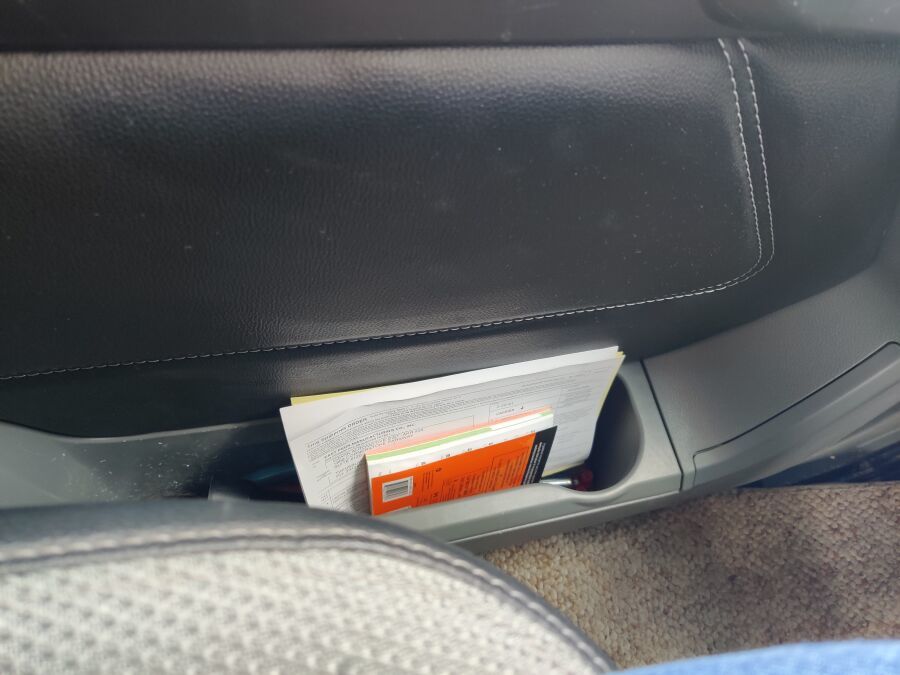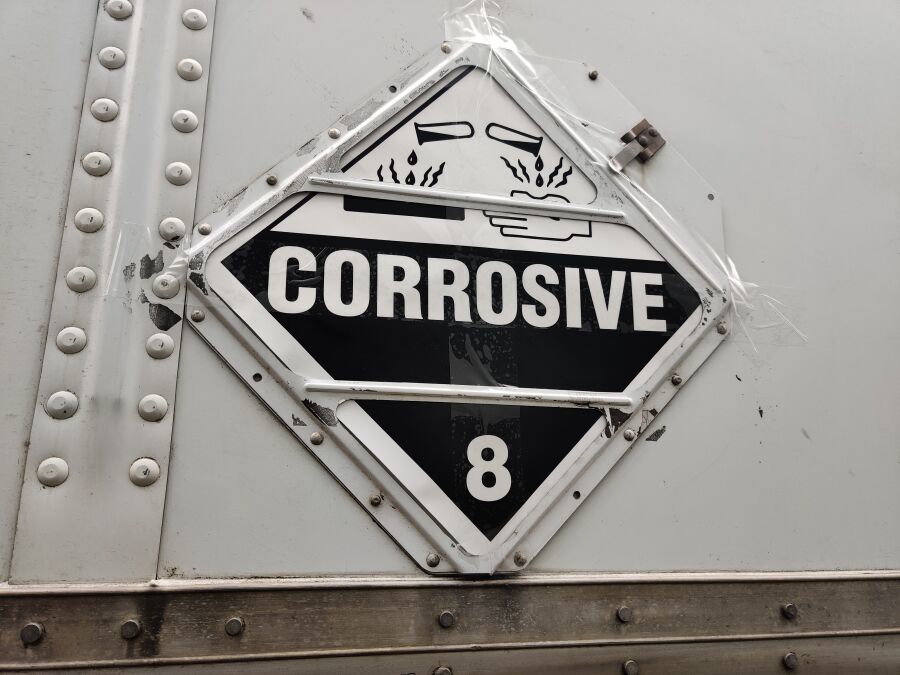To Hazmat Or Not To Hazmat
Topic 29720 | Page 1
There is nothing difficult about a HazMat load. I would not start turning down loads at this point in your career. About the only thing you are going to do differently is have the paper work readily accessible in the pocket of your driver's side door. You don't need a mentor to show you that. You got that endorsement so that you could be a more valuable employee. It does nothing for you if you turn down those loads.
HAZMAT:
Hazardous Materials
Explosive, flammable, poisonous or otherwise potentially dangerous cargo. Large amounts of especially hazardous cargo are required to be placarded under HAZMAT regulations
HOS:
Hours Of Service
HOS refers to the logbook hours of service regulations.I agree with OS completely. Not sure what you’re pulling, but probably a box. Shipper’s that ship hazmat know the rules and can walk you through their paperwork and most are very helpful. They know what placards to give you. Many will even put them on for you. I’m not sure why you bothered to get the endorsement if you don’t intend to use it. Wasted time and money. Your company is glad you have it and will ask you to utilize it.
Even though I pull a chemical tanker I rarely pull hazmat but it isn’t that big a deal. I take my ERG book and paperclip the pages for the product. Keep the paperwork within arms reach while going down the road and on the drivers seat when out of the cab. Where most run into a problem is loosing a placard. Always the shipper for an extra one. When you stop, walk around and make sure they are still in place. I have clear plexiglass covers I put over them to prevent them from being damaged.
My email is in my profile. If you need advice on the shoot me an email.
HAZMAT:
Hazardous Materials
Explosive, flammable, poisonous or otherwise potentially dangerous cargo. Large amounts of especially hazardous cargo are required to be placarded under HAZMAT regulations
Shipper:
The customer who is shipping the freight. This is where the driver will pick up a load and then deliver it to the receiver or consignee.
OOS:
When a violation by either a driver or company is confirmed, an out-of-service order removes either the driver or the vehicle from the roadway until the violation is corrected.
While I agree with the others, you WILL be required to take a hazmat safe route. When I drove for Schneider, they dispatched to the Qualcomm in a way that the routing automatically did that. Go through Pennsylvania tunnels with hazmat and you may regret it.
Also, some carriers pay extra for a hazmat load and it can be easy money. I remember pulling a few times out of NJ, got paid the extra $, but the amount was never enough to require placards.
I hope this helps.
HAZMAT:
Hazardous Materials
Explosive, flammable, poisonous or otherwise potentially dangerous cargo. Large amounts of especially hazardous cargo are required to be placarded under HAZMAT regulations
Qualcomm:
Omnitracs (a.k.a. Qualcomm) is a satellite-based messaging system with built-in GPS capabilities built by Qualcomm. It has a small computer screen and keyboard and is tied into the truck’s computer. It allows trucking companies to track where the driver is at, monitor the truck, and send and receive messages with the driver – similar to email.I pull Hazmat usually at least once a week unless you are placard something crazy like explosive or radioactive you generally won't be too inconvenienced. I agree with what everyone else said, also don't forget to stop at R. R crossings.
HAZMAT:
Hazardous Materials
Explosive, flammable, poisonous or otherwise potentially dangerous cargo. Large amounts of especially hazardous cargo are required to be placarded under HAZMAT regulations
So, I was offered a hazmat load, but declined. I am hazmat certified, but have never done a hazmat load. My company has a hotline to guide me on which placards to place. Still, I don't feel comfortable. I earned my endorsements on the written almost two years ago. My question is, would you suggest to take a hazmat load, and freshen up on some of the requirements? Or, is it something that I should spend time with a hazmat mentor?
I had a similar experience a few months back, I arrived at shipper , checked in, went and dropped my empty and located the loaded I was picking up then drove back to the gate to check out. Well, dude sets the paperwork down along with a stack of hazmat placards. I asked if the whole load was hazmat and he says yes it requires a placard. I refused the load. However, I do not have a hazmat endorsement. They found me another load leaving the same place.
HAZMAT:
Hazardous Materials
Explosive, flammable, poisonous or otherwise potentially dangerous cargo. Large amounts of especially hazardous cargo are required to be placarded under HAZMAT regulations
Shipper:
The customer who is shipping the freight. This is where the driver will pick up a load and then deliver it to the receiver or consignee.
I am currently on a HM load, dropping this at a PA yard of ours, then picking up another going from PA to MO.
Stop at RR crossings, don't go through tunnels, go around cities, keep your eyes open for Hazmat and No Hazmat signs.
Placards should be given to you by shipper.
This is where my bills are. In driver's door pocket.

I keep them I book.

Placards on four sides, like this.

I set my Hazmat category in my GPSs, then verify it's a good route, then go. Pay attention.
Good luck.
HAZMAT:
Hazardous Materials
Explosive, flammable, poisonous or otherwise potentially dangerous cargo. Large amounts of especially hazardous cargo are required to be placarded under HAZMAT regulations
Shipper:
The customer who is shipping the freight. This is where the driver will pick up a load and then deliver it to the receiver or consignee.

I used to haul hazmat cross country with my previous employer. You are also required to go through yearly hazmat training with your employer. And make sure they give you a current copy of the ERG Book, it updates every 4 years. Like others have said put you bills in the ERG on the correct page for what you are hauling and have it within arms reach from buckled in drivers seat. And when you are not in the drivers seat, out your paperwork in your seat. And one last little bit of info. Stop at all railroad crossings and pull into all open weight stations, even if you get the bypass.
HAZMAT:
Hazardous Materials
Explosive, flammable, poisonous or otherwise potentially dangerous cargo. Large amounts of especially hazardous cargo are required to be placarded under HAZMAT regulations
You are also required to go through yearly hazmat training with your employer.
Your company may have done it yearly, but recurrent hazmat training is only required every three years, or when there’s a significant change to the rules.
I could dive deeper into the rules (like rr crossings controlled by a traffic signal), but since Oldschool likes things kept simple, I’ll just add a tidbit I find interesting. Putting your bol in the correct page of your erg isn’t mandatory, but is often done around here because a dot officer can ask a driver to show knowledge of his erg by asking him to look up his load in the book. Bol in the right page will solve that. And before I hear that that’s an old wive’s tale, one of our drivers got a violation just last month because he couldn’t find his loaded product in the erg-what makes this situation even dumber is the un code for all the products we haul are on our placards.
HAZMAT:
Hazardous Materials
Explosive, flammable, poisonous or otherwise potentially dangerous cargo. Large amounts of especially hazardous cargo are required to be placarded under HAZMAT regulations
DOT:
Department Of Transportation
A department of the federal executive branch responsible for the national highways and for railroad and airline safety. It also manages Amtrak, the national railroad system, and the Coast Guard.
State and Federal DOT Officers are responsible for commercial vehicle enforcement. "The truck police" you could call them.
New Reply:
New! Check out our help videos for a better understanding of our forum features

















Preview:








 TT On Facebook
TT On Facebook
So, I was offered a hazmat load, but declined. I am hazmat certified, but have never done a hazmat load. My company has a hotline to guide me on which placards to place. Still, I don't feel comfortable. I earned my endorsements on the written almost two years ago. My question is, would you suggest to take a hazmat load, and freshen up on some of the requirements? Or, is it something that I should spend time with a hazmat mentor?
HAZMAT:
Hazardous Materials
Explosive, flammable, poisonous or otherwise potentially dangerous cargo. Large amounts of especially hazardous cargo are required to be placarded under HAZMAT regulations